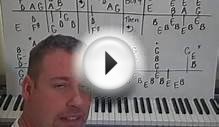
Keyboard, piano lessons For Beginners
 Most people would love to have a real piano, but space and removals often dictate that a keyboard would be the more practical option. Over my years in teaching, parents have regularly asked me for some help choosing a piano keyboard for beginners.
Most people would love to have a real piano, but space and removals often dictate that a keyboard would be the more practical option. Over my years in teaching, parents have regularly asked me for some help choosing a piano keyboard for beginners.
The choice is often a bit overwhelming. Parents often don’t want to spend too much but equally don’t want to waste their money on something that isn’t up to the job. Nowadays, digital keyboards reproduce a very close sound to a real piano, replacing the sound of the wire strings and felt hammers with a digital recording. In my opinion the digital piano keyboards are best for pupils who want to learn to play the instrument, read music and probably progress eventually to a full size acoustic piano.
*Please note, this page contains affiliate links for your convenience*
My tips for choosing a piano keyboard for beginners1. Make sure the keyboard is a full size – as long as an acoustic piano with 88 keys and 7 octaves. The keys should also be the same size as a real piano. These two points are really important for learning the correct finger spacing and scale of the instrument as well as being able to adjust to other pianos and keyboards that the player might need to play elsewhere in the future.2. A synthesizer offers more options with different effects and can reproduce the sounds of many other instruments. There is a wide choice available from reasonable starter ones to the more sophisticated versions great for budding composers when used with computer programs. However all these extra features can be both confusing and distracting for a young beginner. So are not essential for a beginner’s keyboard.
3. Make sure your keyboard comes with an adjustable stand. You might need to purchase one separately. You can then use any chair or stool that fits comfortably for the pupil’s hands to be at the same level as the keyboard.
4. Choose a keyboard with weighted keys. This means that you need to press them down but they spring back up like a real piano. Cheaper keyboards don’t usually have this feature. Learning to play on weighted keys builds finger strength and technique and means you can always adjust to a real piano.
5. Touch sensitive keys means that they respond in volume according to how hard or softly you play them. This facility is usually only available on higher end keyboards and while very convenient is quite different from an acoustic piano, which might be a problem later on. So this is something to watch out for. Most digital pianos should have an option to turn it off if they do come with it.
6. Try to keep it simple for young beginners. Too many extra features and special effects can be a little overwhelming. After all learning to play and read 88 notes in the right order is quite a challenge already!
As in all things you get what you pay for and you can pay a lot for a high end instrument. Personally I don’t think it’s necessary to start at the top end for a young beginner. An excellent choice is the Yamaha P35B Portable Digital Piano (see the review below). There are cheaper options available but they won’t have all the features discussed above and you’ll only find yourself having to replace it after a year or so. The Yamaha P35 is a perfect compromise as it’s still reasonably priced, sounds fantastic, ticks all the boxes and will not disappoint, lasting a child all the way through without an upgrade.
If money is tight you can always start off with a second hand keyboard and it’s always worth keeping a look out for freecycle schemes in your area. It’s amazing what some people throw out!
*Disclaimer: the links here are Amazon affiliate links (thanks for supporting us!) but I did purchase this keyboard for my daughter’s 23rd Birthday present and this review is not affiliated with or sponsored by Yamaha in any way.*
I grew up always playing an acoustic piano at home, but knew that I needed something a little lighter (!) and more portable for when I moved out. This keyboard has been perfect. Overall the sound is excellent for a digital piano and the keyboard feels very good quality. The keys are really well weighted – which is one of the things I was looking for most – and it is a real pleasure to play.
It has quite a few modcons including things like a built in metronome as well as a few synthesizer sounds (organ, harpsichord etc.) but to be honest, I haven’t really found much use for them. It comes with a music stand which is fairly sturdy, but I had to purchase the adjustable keyboard stand separately.
The one slight downside is that the sustain pedal that comes with the keyboard isn’t really up to par. I bought this one as a replacement and have been very impressed. In my opinion it is well worth the extra money to upgrade. Although I’ve played for many years, I would definitely recommend the Yamaha as a good piano keyboard for beginners. Nice and simple!
YOU MIGHT ALSO LIKE


Share this Post
Related posts
Acoustic Blues Guitar Lessons for Beginners
Every guitar player experiences a major turning point early on in their education. After the requisite, and often times…
Read MoreYouTube Guitar lessons for Beginners acoustic
How to Get the Most from Your YouTube Learning Experience Want to improve your playing, but don’t have money or time to dedicate…
Read More










